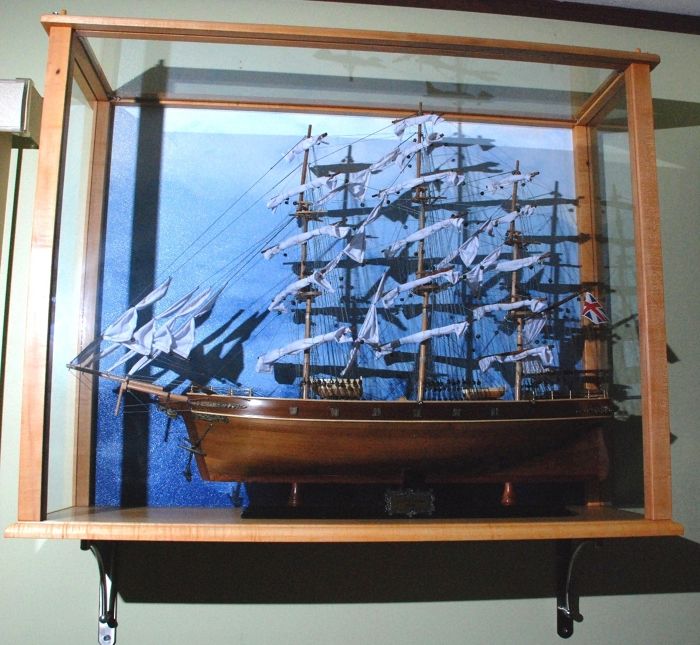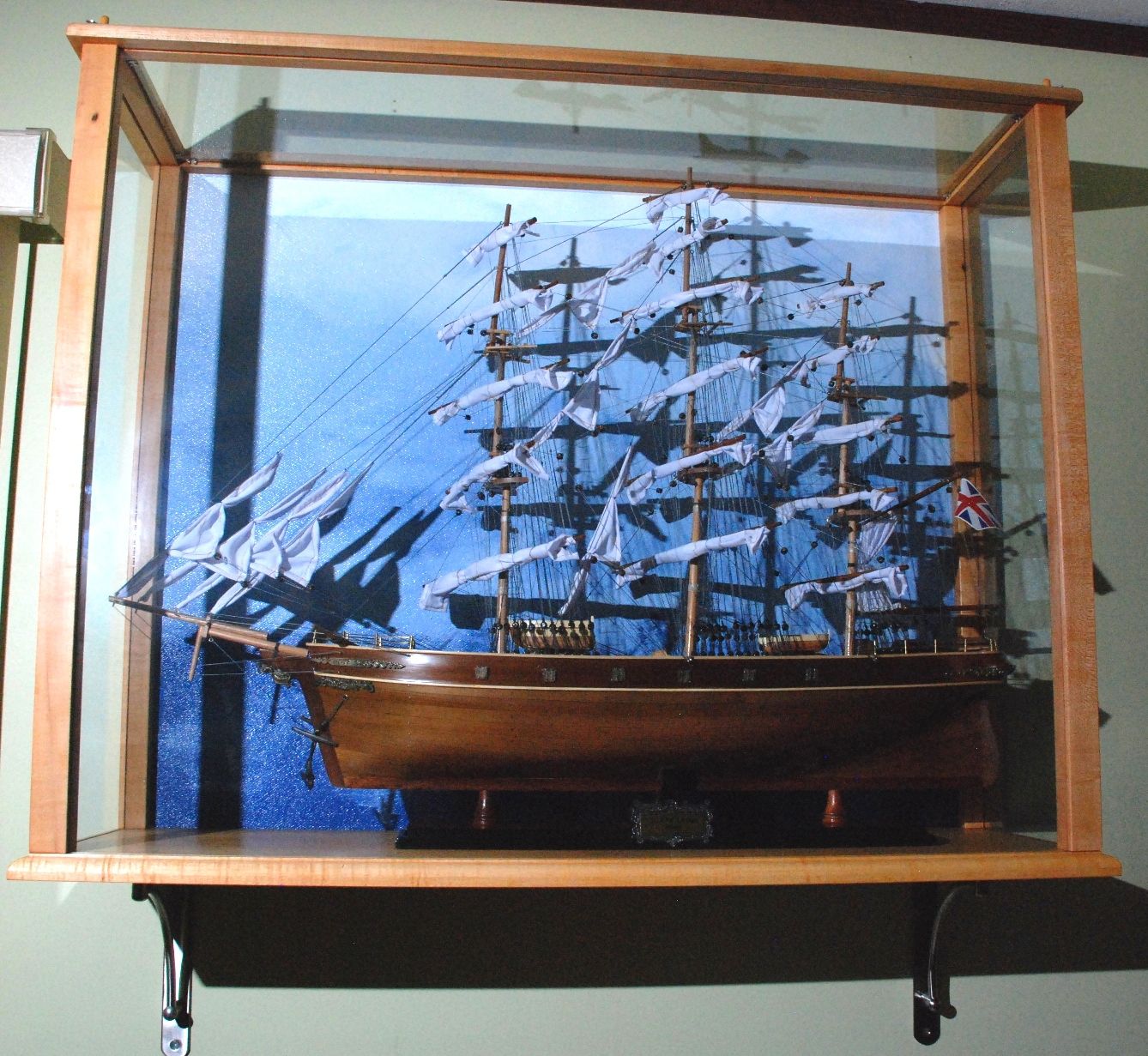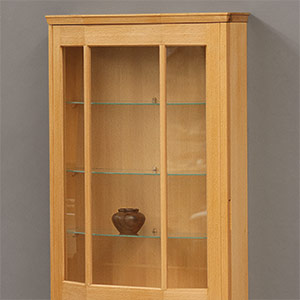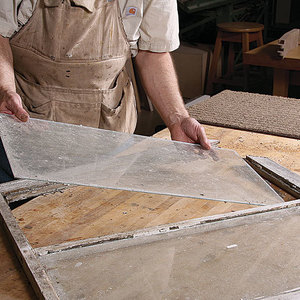A glass display case

Case complete with ship
Sorry about the length, but there may be hints for neophytes like me considering similar display cases: substantial glass, light-weight frame, and the glass easily removable in case of damage…
For a big birthday (don’t ask!) my wife and daughter gave me a wooden model of the Cutty Sark, a famously fast clipper ship built in Scotland in 1869, and now in dry dock in Greenwich in London and open to the public. So I needed a case with glass sides, front and top. The base is solid and the painted back is thin hardboard.
Removable glass sides and front required a removable top. The top frame, 1-3/4″ width, is mitered with biscuits for strength and rabbeted, just like a picture frame, with 3/32″ glass on the underside, glued into the rabbet with clear silicone. For the frame I made 5/4″ square posts, which are attached to the base with 1-1/4 x 5/16″ dowels. Longer dowels in the tops of the posts go through the removable top, with pinholes through the dowels for R-clips to hold the top on. The 3/16″ hardboard back is housed in a 1/4 x 1/4″ slot in each back post. The glass for the sides and front is 1/8″ thick, so the slots in the remaining six sides of the posts are 5/32 x 1/4″ deep. I ordered the glass just 1/16″ undersize in width, so it provides much of the case rigidity, when we get that far. I also routed stopped shallow grooves (1/4″ W x 3/16″ D) into the top and the base to house the glass and the back. The grooves in the base got a layer of stick-on felt to soften any rattles.
Construction. I first glued the posts to the base via the dowels. The tall posts are quite floppy, so I made four temporary strips, with holes for the dowels and little slots, to hold the top together while allowing me to slide the glass pieces in (Pic 2). The sides were easy. With them in place, I stuck the ship display base onto the case base with strips of double-sided tape, allowing easy removal if necessary. The large front glass (36 x 28″) needed a second pair of hands for safety. With that in, I wrapped a band-clamp around the bottom of the posts and removed the temporary stays at the top. The case top then went on, R-clips through the dowels, and it all became reasonably rigid, more or less as planned.
This case is maple. When almost complete (no back or glass) I gave it two coats of tinted Danish oil (Watco: first golden oak, then fruitwood to redden the yellow tint a bit), then wax, rubbed in with fine steel wool. The base and top overhang the posts by 1/2″, with a roundover and a small reveal. The pic shows it complete, on the wall. (The nice brackets are from Lee Valley)
Aside comment: There are many other ways to locate glass in frames, like doors, chief among them the use of quarter-round moldings, easily made repetitively with a router (the roundover) then tablesaw (width), and glued in from front or back with hot glue (I can never get it to work well) or contact cement (easier), or pinned. But for this case I much preferred the idea of housing the glass in grooves so that it could be easily installed and removed.



















Log in or create an account to post a comment.
Sign up Log in